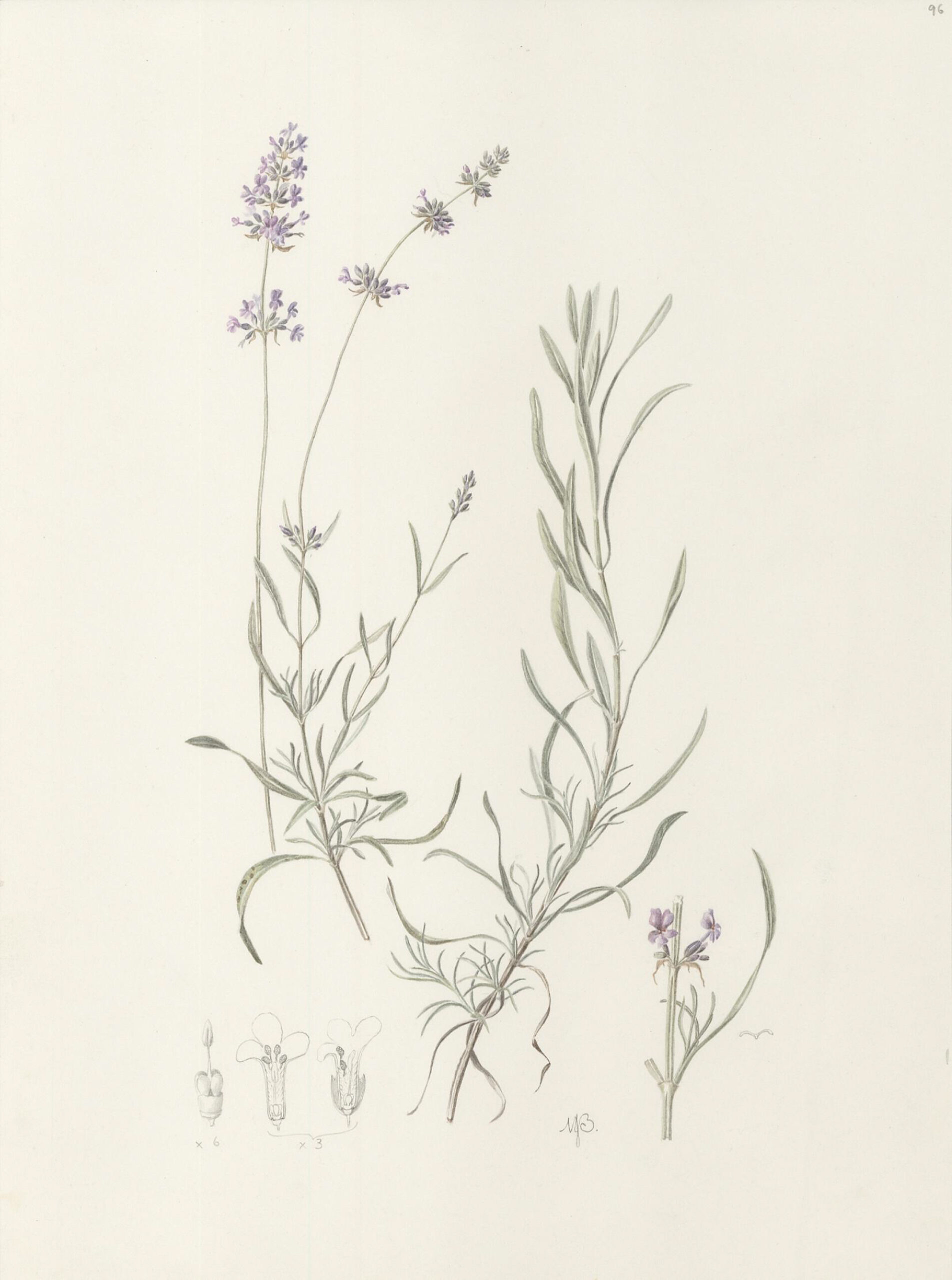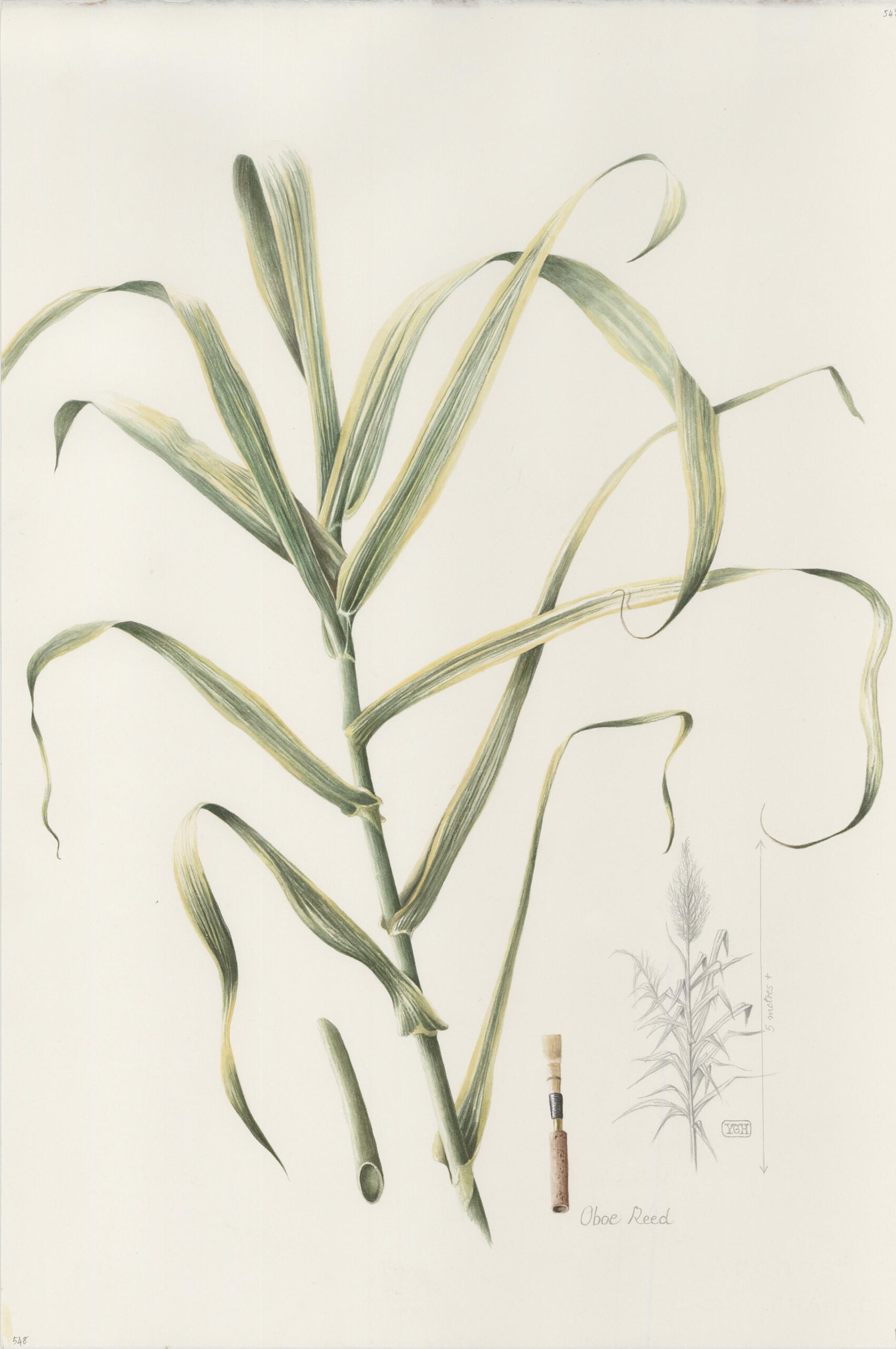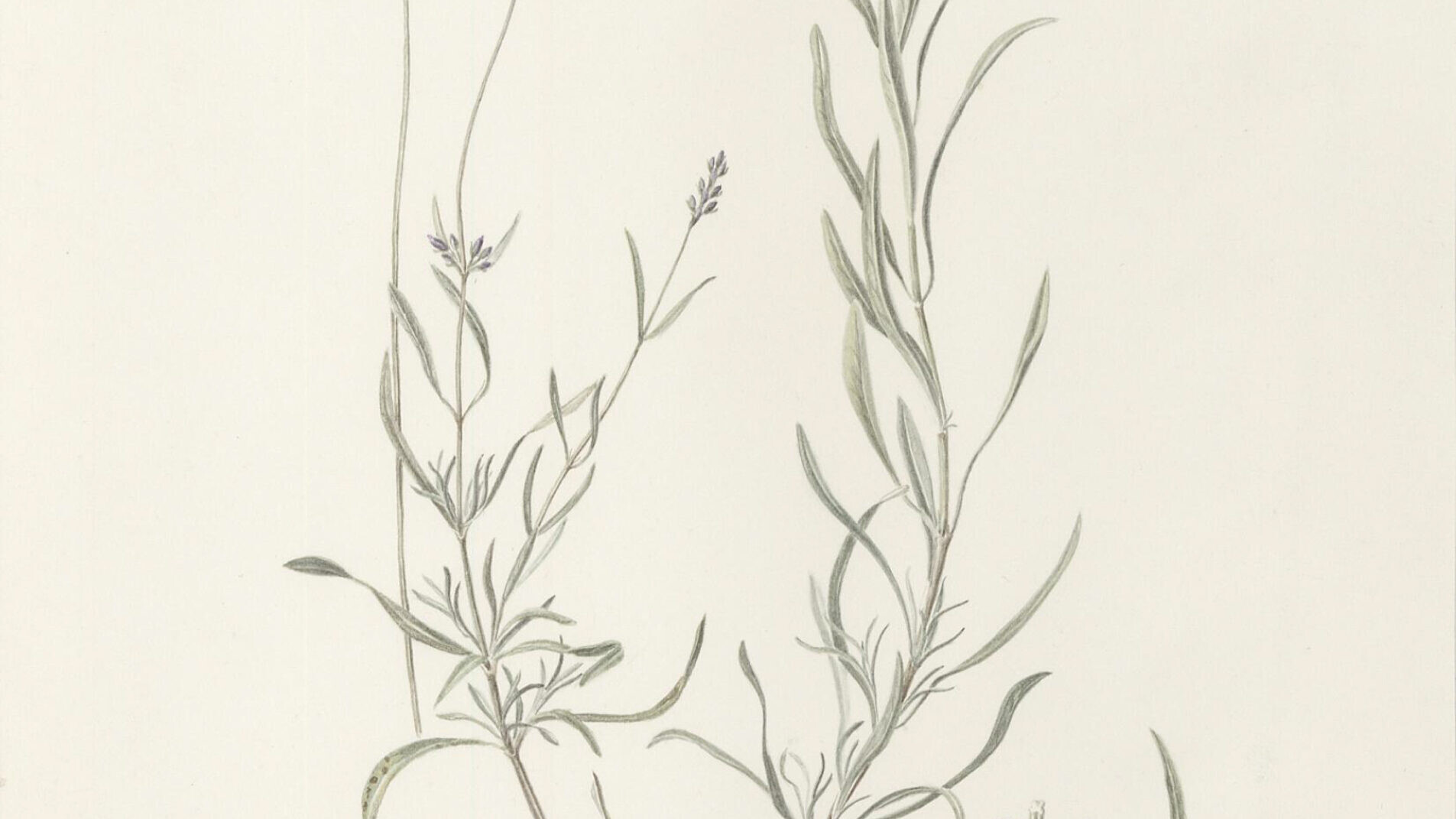Old remedies are making a comeback to support our mental health
By Eve Barro, Assistant Project Curator at Chelsea Physic Garden
Have you ever wondered if old medical texts contained remedies that might still help us? Well, the answer is “YES!” For this month’s blog post I decided to delve into ancient herbals and highlight three plants that may have potential to help us cope with health conditions such as anxiety, depression and dementia. These plants have been at the core of mental health phytotherapy research for the last few years. Let me introduce you to the properties of Lavandula angustifolia (English lavender), Crocus sativus (saffron) and Panax ginseng (ginseng).
Lavandula angustifolia (English lavender)
The anti-anxiety property of Lavandula angustifolia is receiving attention in contemporary research and modern herbalism. Its use in Europe goes back several hundred years. William Turner (1509-1568) wrote about it in A New Herball: “I judge that the flowers of Lavender quilted in a cap and daily worne (…) comfort the braine very well” (1). William Turner was an English naturalist. The herbal from which this quote was taken was published in 1551 and is said to be the first scientific herbal to be originally published in the English language (writing in English rather than Latin ensured that his work could be accessible to all the members of the medical profession) (2). Lavender oil has thus been valued for its calming and sedative properties for hundreds of years.
Modern research has shown that these properties can be mainly attributed to two compounds: linalyl acetate and linalool. Research also suggests that a repeated exposure to lavender essential oil smell can reduce anxiety, depression and improve sleep quality (3, 4). Experiments conducted in model organisms have also demonstrated that lavender seems to have neuroprotective, sedative, anxiolytic, analgesic, and anticonvulsive properties (5). The molecules contained in lavender essential oil are believed to alleviate the mood through different mechanisms. One of them is through the inhibition of the serotonin transporter, acting similarly to drugs such as Fluoxetine and Paroxetine. Depression has been linked to low levels and functional deficiency of serotonin. Serotonin is a neurotransmitter linked to feelings of happiness, satisfaction, and optimism (6). The serotonin transporter is responsible for clearing up the serotonin released in synapses (junction between nerve cells). Inhibiting the serotonin transporter thus increases the amount of serotonin available in synapses leading to a longer lasting feeling of happiness (7).


Crocus sativus (saffron)
Crocus sativus has been used in Iranian traditional medicine for hundreds of years to treat a variety of complaints including symptoms of depression. Persian medieval scholar Abū Bakr al-Rāzī (865-925) wrote about it in his book the Kitab al-Hawi fi al-tibb: “Use of saffron would lead to a high feeling of pleasure which is so close to a psychotic state”. He also noted that the plant functions as a “sedative agent” (8).
Abū Bakr al-Rāzī is considered to be one of the greatest physicians of the medieval period. One of his most important works, the Kitab al-Hawi fi al-tibb (the comprehensive book of medicine) is a collection of medical notes he compiled based on his experience and scholarly research on Greek medical texts (8). It contains notes on various plants and their medicinal uses.
What we commonly call “saffron” is obtained from the stigmas of the flower of Crocus sativus. Research has shown that the substance might be beneficial for individuals experiencing depressive disorders (9, 10). The property of saffron is due to the synergistic action of various compounds including safranal and crocin. Research suggests that these compounds inhibit the re-absorption of serotonin, dopamine and norepinephrine in the synapses allowing them to have a longer lasting action (11). Dopamine is a neurotransmitter associated to the brain’s reward system and feeling of satisfaction. Norepinephrine is a neurotransmitter which promotes alertness and vigilance. Research also suggests that the plant could be useful in the management of Alzheimer’s disease. Indeed, crocin inhibits beta amyloid induced apoptosis (cell death) in neuronal cells. Beta amyloids are molecules which can abnormally assemble into clumps that are thought to be important in the development of Alzheimer’s disease as they provoke brain cell death and injury (12).
Panax ginseng (ginseng)
This plant is used in traditional Korean, Japanese and Chinese medicine as an adaptogen (a plant which helps the body stabilise and adapt to anxiety, stress, and fatigue). The use of the plant for depression-like symptoms and dementia goes back hundreds of years in traditional Chinese medicine. The plant is mentioned in Beiji Qianjin Yaofang written by Sun Simiao in 652AD. In this text it appears in combination with other plants in the herbal remedy “Kai-Xin-San” used to relieve depression-like symptoms. The book’s author, Sun Simiao, was a Chinese physician during the Sui (581-618) and Tang (618-907) dynasties. His contribution to Chinese medicine was such that he was called “King of Medicine”. Beiji Qianjin Yaofang is a formula book. Formula books also known as “fangshu” are collections of prescriptions organised by type of illnesses with details on the preparation of remedies (13,14).
Modern research has shown that Panax ginseng compounds have a variety of properties including the support of neurotransmission, memory and the central nervous system in general (15, 16). Panax ginseng is believed to help relieve symptoms associated with depression through different mechanisms. One of them is through the temporary inhibition of the hypothalamic-pituitary-adrenal (HPA) axis. The HPA axis is a system which regulates stress responses in the body. Depression is associated with a hyperactivity of this system. In normal times, the body can produce cortisol, a stress hormone, to trigger a fight or flight response when necessary. However, during a depressive episode the HPA can be hyperactive leading to an overproduction of cortisol in the body which can alter the brain. By temporarily inhibiting the HPA, Panax ginseng extracts can thus help to relieve anxious feelings. Panax ginseng extracts have also been shown to help improve brain derived neurotrophic factor (BDNF) action. Depression has been linked to a decrease of BDNF, a molecule which promotes the survival of neurones in the brain. A decrease of this molecule can be linked to atrophy of cerebral regions including the hippocampus which is key to the control of emotions (17). Supporting and stimulating BDNF function can thus directly help with depressive symptoms by facilitating the regulation of emotions.
Where is it most likely to find the plants mentioned in this post?
- Crocus sativus: Pond Rockery, plants in pots
- Lavandula angustifolia: Medicinal Officinalis, Mediterranean rockery
- Panax ginseng: Herbal Remedy in a pot, pots in Edible Garden
To know more:
Farrell, H. (2021). The herb almanac: A seasonal guide to medicinal plants. Aster, an imprint of Octopus Publishing Group Ltd.
References
- Rohde, E. S. (1969). A garden of herbs (Rev. and enl. ed). Dover Publications.
- (2022). William Turner and the first English herbal. Royal College of Physicians of Edinburgh. https://www.rcpe.ac.uk/heritage/william-turner-and-first-english-herbal
- Motti, R., & de Falco, B. (2021). Traditional herbal remedies used for managing anxiety and insomnia in italy: An ethnopharmacological overview. Horticulturae, 7(12), 523. https://doi.org/10.3390/horticulturae7120523
- Harada, H., Kashiwadani, H., Kanmura, Y., & Kuwaki, T. (2018). Linalool odor-induced anxiolytic effects in mice. Frontiers in Behavioral Neuroscience, 12. https://www.frontiersin.org/articles/10.3389/fnbeh.2018.00241
- Donelli, D., Antonelli, M., Bellinazzi, C., Gensini, G. F., & Firenzuoli, F. (2019). Effects of lavender on anxiety: A systematic review and meta-analysis. Phytomedicine, 65, 153099. https://doi.org/10.1016/j.phymed.2019.153099
- DFARHUD, D., MALMIR, M., & KHANAHMADI, M. (2014). Happiness & health: The biological factors- systematic review article. Iranian Journal of Public Health, 43(11), 1468–1477. https://www.ncbi.nlm.nih.gov/pmc/articles/PMC4449495/
- Wray, N. H., & Rasenick, M. M. (2019). Chapter Two—Lipid rafts in psychiatry. In J. M. Witkin (Ed.), Advances in Pharmacology (Vol. 86, pp. 21–45). Academic Press. https://doi.org/10.1016/bs.apha.2019.04.001
- Tibi, S. (2005). Al-razi and islamic medicine in the 9th century. The James Lind Library; JLL Bulletin: Commentaries on the history of treatment evaluation. https://www.jameslindlibrary.org/articles/al-razi-and-islamic-medicine-in-the-9th-century/
- Siddiqui, M. J., Saleh, M. S. M., Basharuddin, S. N. B. B., Zamri, S. H. B., Mohd Najib, M. H. bin, Che Ibrahim, M. Z. bin, binti Mohd Noor, N. A., Binti Mazha, H. N., Mohd Hassan, N., & Khatib, A. (2018). Saffron (Crocus sativus L.): As an antidepressant. Journal of Pharmacy & Bioallied Sciences, 10(4), 173–180. https://doi.org/10.4103/JPBS.JPBS_83_18
- Jackson, P. A., Forster, J., Khan, J., Pouchieu, C., Dubreuil, S., Gaudout, D., Moras, B., Pourtau, L., Joffre, F., Vaysse, C., Bertrand, K., Abrous, H., Vauzour, D., Brossaud, J., Corcuff, J. B., Capuron, L., & Kennedy, D. O. (2021). Effects of saffron extract supplementation on mood, well-being, and response to a psychosocial stressor in healthy adults: A randomized, double-blind, parallel group, clinical trial. Frontiers in Nutrition, 7, 606124. https://doi.org/10.3389/fnut.2020.606124
- Musazadeh, V., Zarezadeh, M., Faghfouri, A. H., Keramati, M., Ghoreishi, Z., & Farnam, A. (2022). Saffron, as an adjunct therapy, contributes to relieve depression symptoms: An umbrella meta-analysis. Pharmacological Research, 175, 105963. https://doi.org/10.1016/j.phrs.2021.105963

